BEST Doenjang Jjigae (된장찌개) – Spicy and Delicious.

Comforting.
Spicy.
Delicious.
Of all the recipes in my cookbook, I did not anticipate that my Spicy Deonjang Jjigae recipe would be the one I see people making, over and over and over again! But in retrospect, it makes a ton of sense. Doenjang jjigae, or Korean soybean paste stew, is not only comforting and delicious, it’s one of the simplest recipes in my arsenal. It is an absolute staple of Korean cuisine and known for its rich, savory flavors, along with its hearty fillings. A delicious doenjang jjigae is quintessential Korean comfort food and this doenjang jjigae recipe is no exception to that rule.
So, without further ado, let’s get into it!
Disclaimer: Some of the links in this post may be affiliate links for products I use and love. If you make a purchase after clicking one of those links, I may earn a small affiliate commission, perhaps enough to buy some extra gochujang or gochugaru 🙂
What Is Doenjang Jjigae?

Let’s begin with the basics: what does doenjang jjigae mean?
“Doenjang” or 된장 refers to Korean fermented soybean paste. If you have my book, then you are already familiar with what doenjang is–but let’s review for those who haven’t read through the pantry section in a while: doenjang is made from fermenting yellow soybeans, often with wheat or rice flour.
What does doenjang taste like? If you’ve ever had miso, then you’ll have a good sense of what to expect with doenjang. Doenjang, however, is much more pungent and concentrated, imparting saltiness and the “funk” you’d expect from any fermented food. Because doenjang tastes and even looks similar to miso, people sometimes refer to doenjang jjigae as “Korean miso soup.” I wouldn’t do that, though, in the hearing of any actual Korean people. Korean people take pride in doenjang as a uniquely Korean ingredient, one with its own rich history. We’ll talk more about doenjang, itself, below in the Ingredients section.
The second half of the Korean word is “jjigae” or 찌개. This refers to “stew.” Not to be confused with soup (which would be doenjang guk or 된장국). This is not a recipe for Korean soybean paste soup (which is much more watery, contains fewer ingredients, and very much a side piece to a larger meal). This doenjang jjigae will contain a ton of fresh vegetables, shiitake mushrooms, and tofu to ensure that it is a hearty stew–the kind that could serve as its own meal (with rice of course!).
You may already be familiar with many other classic Korean stews, like kimchi jjigae (kimchi stew) or soondooboo jjigae (silken tofu stew).
Doenjang Jjigae’s importance to Korean culture.

Doenjang has been around since Korea’s Three Kingdom Era, which means it’s been around for thousands of years. Doenjang stew became very popular in the mid-18th century, mostly as a health food. Various vegetables would be cooked in a rich doenjang broth and tofu would be added for extra nutrition and protein.
To many Koreans (including this Korean), this staple Korean stew is even more ubiquitous than America’s chicken noodle soup. Why? Because, as you probably already know, Korean food is all about creating the perfect symphony of flavors and textures. A stew or jjigae is as much a part of nearly every meal as one of the “banchan” or side dishes. Deonjang jjigae is relatively cheap to prepare, not overpowering with its flavor, and packs a fair amount of nutrition per spoonful. Hence, you will often see doenjang jjigae at breakfast, lunch, and dinner, and certainly, it will usually be tagged on as “service” (i.e., for free) as part of your meal at Korean restaurants.
Earlier, I warned against calling doenjang jjigae “Korean miso soup.” And I’ll out myself as having made this mistake myself when I first started developing recipes. Many Korean people will be offended by the reference for the same reason they’d be offended if you called kimbap “Korean sushi.” While there are definitely similarities in both flavor and ingredients, there are important distinctions in the way doenjang is fermented. And, for a country that spent so much of its history being forced to erase its identity (culturally, linguistically, financially, and culinarily), ingredients like doenjang represent resilience and jeong–that untranslatable Korean word that refers to a deep connection with oneself and each other.
As a Korean American, I was a little nervous about my readers’ reception to doenjang and this kind of stew. Although it is a part of every Korean kitchen, doenjang isn’t a well known ingredient for non-Koreans. Moreover, doenjang isn’t the prettiest ingredient and it smells very strong. But most veteran cooks will know that that strength of smell often translates into depth of flavor.
I’ve been extremely grateful to the vegan community which, in my experience, is far more willing to try new things when it comes to cooking and eating. Many of my non-vegan Korean friends have expressed their surprise at how many people have been making doenjang jjigae out of my cookbook!
Key Ingredients and Notes on Substitutions for Doenjang Jjigae Recipe.
Although doenjang jjigae is a relatively simple and straightforward recipe, some of these ingredients will require some discussion!
Doenjang or Korean Fermented Soybean Paste.

If you are surprised by this ingredient, I dunno what to tell ya! Of course doenjang jjigae is going to contain doenjang in it! And, as we discussed above, doenjang is Korean fermented soybean paste. Why the “Korean” in front of fermented soybean paste? So that it’s not confused with miso, which is also a type of fermented soybean paste.
Where can you get doenjang? At this point, you can only purchase doenjang at Asian grocery stores or online. I have yet to see doenjang at a Western style grocery store (though, obviously, I haven’t been to every single one). In a Korean grocery store, you’ll often find doenjang in either the refrigerated section (usually with the produce) or in the sauce aisle (where you’ll also find soy sauce and gochujang). Of course, you can also make your own homemade version of doenjang, but honestly? Store-bought doenjang can be excellent.
What kind of doenjang should you get? Yup, there are literally hundreds of different kinds and brands of doenjang. Some of them may include beef or seafood, so make sure to read the labels! And, the worst part is, they are often changing. For example, I wanted to suggest Chung Jung One’s “Kong” Doenjang because it is gluten-free. But I cannot find it anywhere online anymore!
But, here’s what I would recommend in terms of brands of doenjang: O’Food or Chung Jung One (same company, different name) makes really good, clean doenjang. The same company also makes a Mild Doenjang, if this is your first go-around with fermented soybean paste. Because most commercial doenjang is fermented using wheat, if you are gluten-free make sure to pick up a gluten-free doenjang.
No, there is no substitute for doenjang in doenjang jjigae. That’s like asking for a substitute for apples in apple pie. I could say pears, but then you’d be eating pear pie.
Gochugaru or Korean Pepper Powder.

You’ll already know this if you made my kimchi jjigae or tteokbokki recipe, but gochugaru is a Korean pepper powder or Korean red pepper flakes. Korean chili flakes are not necessarily a traditional component of doenjang jjigae (I don’t think my mom adds gochugaru to her doenjang jjigae), but I like to add it to give the soybean stew a little extra heat. If you’d rather do without the spicy kick, you can, of course, skip this ingredient.
Substitution Ideas: If you don’t have gochugaru and need a substitute, you can try cayenne or smoked paprika, but your best bet is simply to double up on the green chili pepper or jalapeño if all you’re concerned about is heat. Can you use gochujang if you don’t have doenjang? Sure! I don’t usually use Korean chili paste in my doenjang jjigae (gochujang tends to be on the sweeter side and I don’t like to add sweet to my doenjang jjigae), but many Korean cooks will add a little gochujang to their doenjang jjigae.
Vegetables.
This doenjang jjigae recipe includes a lot of vegetables. Remember, this is a stew! So it needs to be as filling as a main dish! The following vegetables will be included in our doenjang jjigae:
- Korean squash or zucchini
- Yukon gold potato
- Onion
- Green onions
- Garlic
- Green chili pepper
Substitution Ideas: If you don’t have or like zucchini, you can always replace them with Korean white radish or daikon radish (those aren’t the same!). I, myself, do not like Korean radish in my stews because I feel like they’re just there to trick me into believing I’m eating potatoes.
Vegetable Stock.
This doenjang jjigae recipe calls for vegetable stock. You can find an excellent recipe for Korean style vegetable stock in my tteokguk recipe or in my cookbook. But of course, store-bought vegetable broth is also great.
Substitution Ideas: If you don’t have vegetable broth, no problem! You can always use plain water (I did this a lot when I first started making this recipe). Another trick? You can take the water from your final rinse of rice when you’re rinsing the rice that will go with your stew and use that in lieu of vegetable broth. This is a trick handed down from many Korean mothers to help create a rich, velvety broth for their stews!
Shiitake Mushrooms.
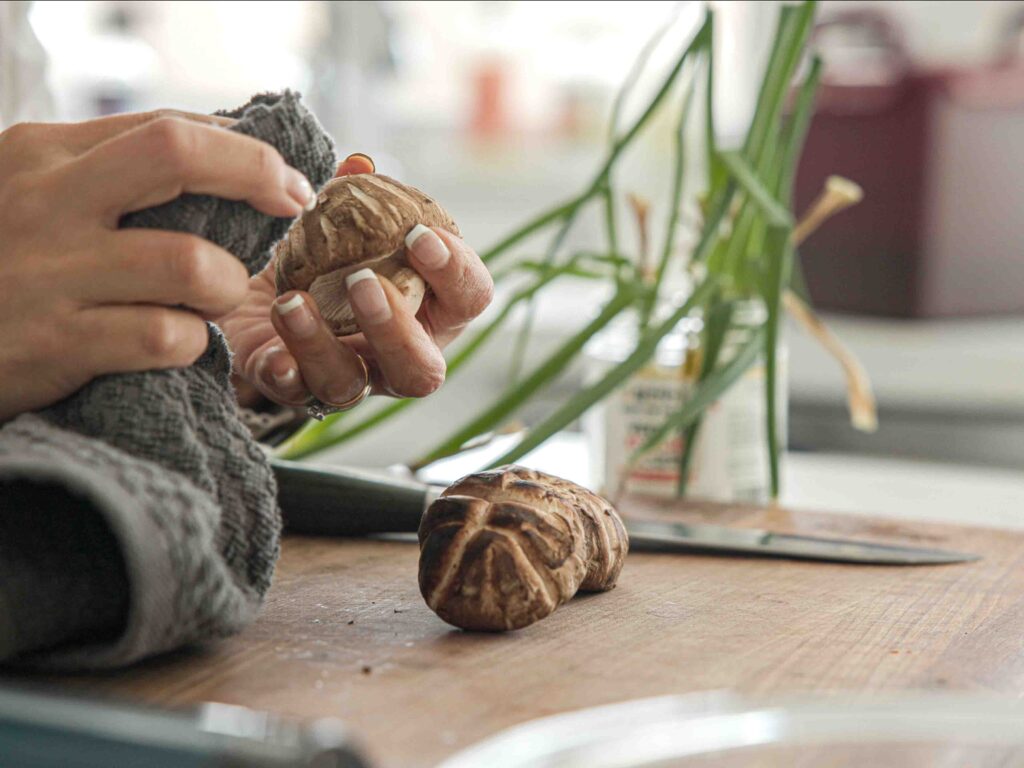
As you may have guessed by now, this is a meatless doenjang jjigae recipe, which, by the way, is not some bastardization of this traditional Korean stew. Believe it or not, there are plenty of Korean dishes that aren’t crammed with meat and seafood. It’s not all about Korean BBQ! That said, in order to give our stew that rich flavor, full of stick-to-your ribs earthiness, we use shiitake mushrooms. If you don’t have shiitake mushrooms, you can use whatever mushroom you prefer or have on hand!
Dahimsa or Dried Kelp.

Many many many Korean stews use anchovy stock for the soup base. This vegan take on doenjang jjigae doesn’t need to be bereft of those flavors. Just swap out the little fishes for dried kelp! I use just a couple of two-inch squares of dried kelp for my doenjang jjigae to create a light “flavor of the sea” for this doenjang jjigae recipe. If you don’t have dried kelp, you can always add a couple drops of my vegan fish sauce.
Tofu.
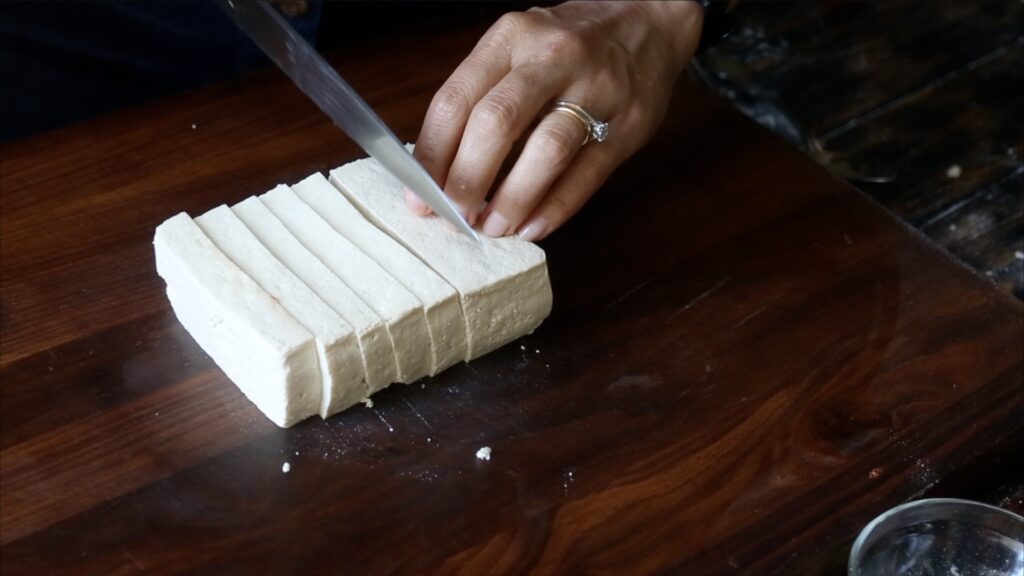
A doenjang jjigae without tofu is, well, probably not doenjang jjigae? It might be doenjang soup? Regardless, this recipe for doenjang jjigae is definitely going to have tofu in it. What kind? Honestly, you can use whatever tofu you want. Most popular varieties of doenjang jjigae use somewhere in the soft to extra firm range of tofu. But if you’re one of those people who uses extra firm for everything, then this might be the excuse you need to try medium or soft tofu! I would not use super firm tofu, as I think that’s simply too chewy for doenjang jjigae, but it’s up to you!
Soup Soy Sauce.
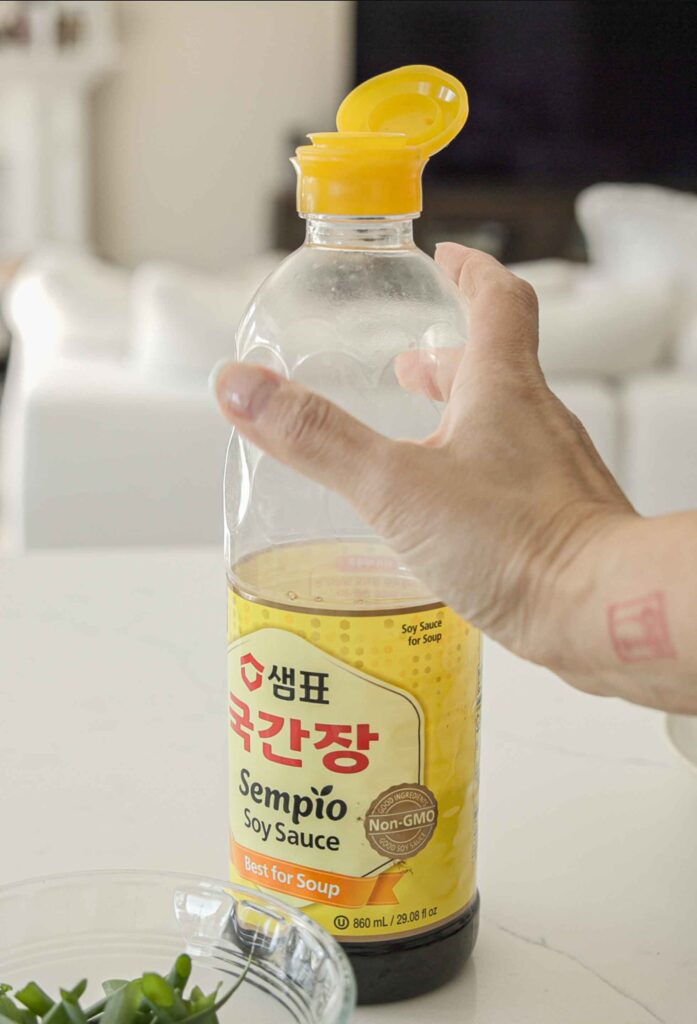
There’s a “soup” soy sauce? Why yes, yes there is. Korean people take their soy sauce very seriously. There are literally hundreds of different kinds of soy sauces in Korea. In fact, the Korean soy sauce aisle at a grocery store is probably the most dizzying of them all. What is soup soy sauce? Soup soy sauce is a less processed soy sauce that is saltier, but lighter in color than regular soy sauce. Many people describe it as having a “cleaner” flavor that’s closer to its source–the same block of meju (or fermented soybean) used to make doenjang.
If you’ve got my book, then you know my hands down favorite soup soy sauce is Sempio’s. But if you don’t have soup soy sauce, use whatever soy sauce you like! And of course, if you are gluten-free, make sure to use tamari or other gluten-free soy sauce!
Toasted Sesame Oil.
The beginning of most Korean stews and soups is always the same: toasted sesame oil. Toasted sesame oil is as Korean as kimchi, in my mind. Its aroma is mouthwatering and will impart incomparable flavor to your doenjang jjigae. Make sure you pick up a good toasted sesame oil and not a cold-pressed kind.
Step-by-Step Instructions for Making Doenjang Jjigae.
Step 1.
To a large ddukbaeggi (Korean clay pot) or medium Dutch oven over low heat, add sesame oil, olive oil, and gochugaru. Use chopsticks or a wooden spoon to stir the gochugaru in the oil so that it doesn’t burn until it begins to foam (about 1 to 2 minutes). Then, add the garlic, onion, green onion (white parts only), mushrooms, zucchini, and potatoes. Sauté the vegetables in the chili-infused oil until fragrant, about 2 minutes.
Step 2.
Add the doenjang and stir until the vegetables are evenly coated. Then, deglaze the pot with soy sauce. Again, stir the vegetables so they are evenly coated. Add vegetable stock and raise the heat to medium-high. Add your dashima and bring your soup to a boil before reducing your heat to medium. Allow your soup to cook for an additional 10 minutes, until your potatoes are fork tender.
Step 3.
Add your tofu and green chili pepper and cook for an additional 5 minutes, giving your tofu some time to suck up all the flavors. Remove the dried kelp and garnish with green onion (green parts).

Frequently Asked Questions.
What is the difference between miso and doenjang?
Both miso (which is used in Japanese cuisine) and doenjang (which is used in Korean cuisine) are pastes made out of fermented soybeans. However, miso is fermented using koji (a type of fungus) while doenjang is fermented using meju (cooked and moldy soybeans) and brine. The differing fermentation process results in different colors (doenjang tends to be darker than miso) and flavor profiles (miso tends to be milder and less pungent).
Can you make doenjang jjigae with miso?
No.
Can you make doenjang jjigae gluten-free?
Yes! Just make sure to utilize a gluten-free doenjang and gluten-free soy sauce (options listed in the Ingredients section). All of the other ingredients to doenjang jjigae are naturally gluten-free!
Recipe Card.

Spicy Doenjang Jjigae – Korean Fermented Soybean Stew.
Ingredients
- 1 tbsp extra virgin olive oil
- 1 tbsp toasted sesame oil
- 2 tbsp gochugaru
- 1/4 cup diced onion
- 2 cloves garlic, minced
- 3 green onions, greens and whites separate
- 3 to 4 large shiitake mushrooms, sliced
- 1/2 cup Korean squash or zucchini
- 1 cup Yukon gold potatoes (or any potatoes)
- 3 tbsp doenjang
- 2 tbsp soup soy sauce
- 2 to 3 cups vegetable stock
- 2 2-inch squares of dashima (dried kelp)
- 16 oz sliced tofu (soft, medium, firm, extra firm)
- 1 green chili pepper or jalapeño, seeded and thinly sliced
Instructions
- To a large ddukbaeggi (Korean clay pot) or medium Dutch oven over low heat, add sesame oil, olive oil, and gochugaru. Use chopsticks or a wooden spoon to stir the gochugaru in the oil so that it doesn't burn until it begins to foam (about 1 to 2 minutes). Then, add the garlic, onion, green onion (white parts only), mushrooms, zucchini, and potatoes. Sauté the vegetables in the chili-infused oil until fragrant, about 2 minutes.1 tbsp extra virgin olive oil1 tbsp toasted sesame oil2 tbsp gochugaru1/4 cup diced onion2 cloves garlic, minced3 green onions, whites3 to 4 large shiitake mushrooms, sliced1/2 cup Korean squash or zucchini1 cup Yukon gold potatoes (or any potatoes)
- Add the doenjang and stir until the vegetables are evenly coated. Then, deglaze the pot with soy sauce. Again, stir the vegetables so they are evenly coated. Add vegetable stock and raise the heat to medium-high. Add your dashima and bring your soup to a boil before reducing your heat to medium. Allow your soup to cook for an additional 10 minutes, until your potatoes are fork tender.3 tbsp doenjang2 tbsp soup soy sauce2 to 3 cups vegetable stock2 2-inch squares of dashima (dried kelp)
- Add your tofu and green chili pepper and cook for an additional 5 minutes, giving your tofu some time to suck up all the flavors. Remove the dried kelp and garnish with green onion (green parts).16 oz sliced tofu (soft, medium, firm, extra firm)1 green chili pepper or jalapeño, seeded and thinly sliced3 green onions, greens and whites separate
Notes
- Sesame oil has a low burn point, so we cut it with olive oil (which has a higher burn point), in order to guard against the oil getting bitter. Also, remember to use toasted sesame oil (not cold pressed), as this will dramatically impact the flavor of your stew.
- Keep a close eye on the gochugaru–it burns quickly. You will need to move quickly as soon as it begins to foam.
- I like to use Yukon gold potatoes as they are waxier and prevent the stew from getting muddled.
Nutrition
Did you like this recipe? If so, please leave a rating and share it!

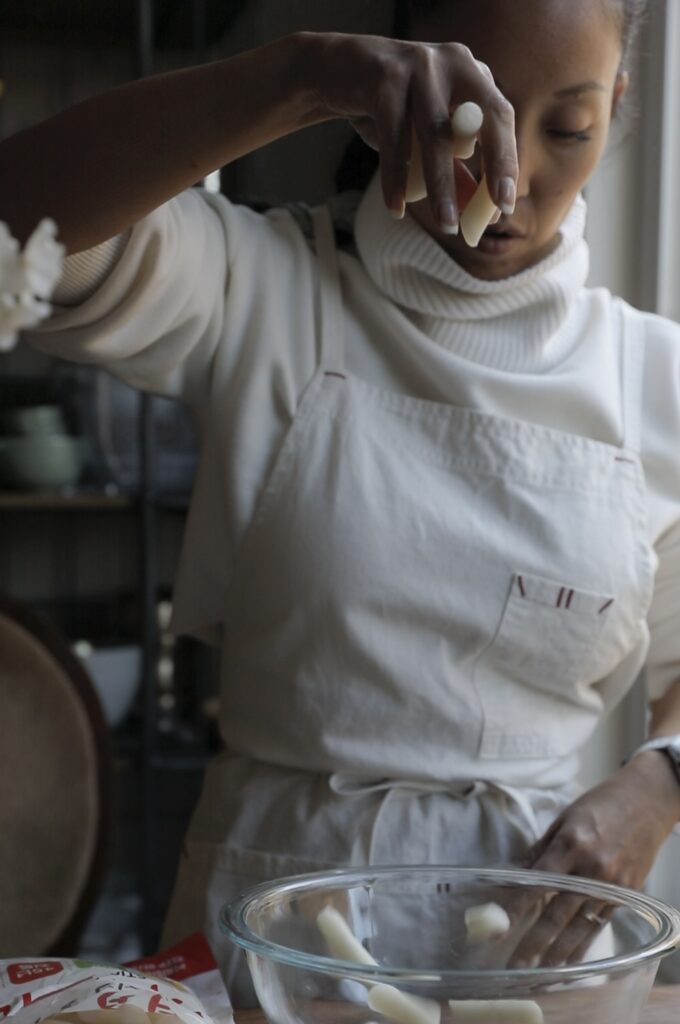









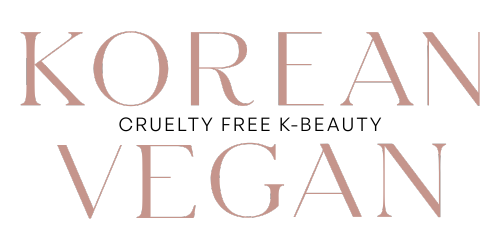

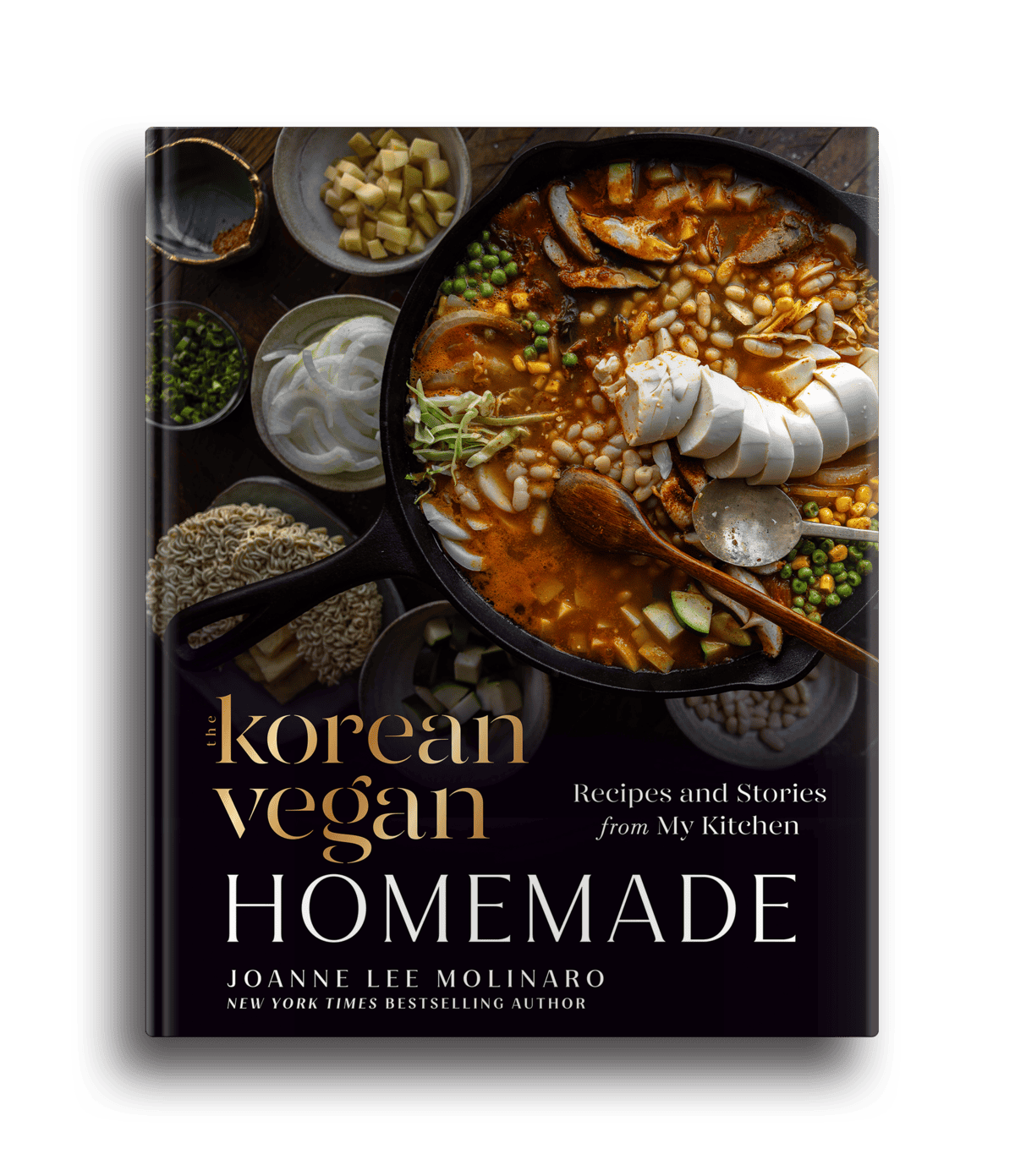
This was the first Korean recipe I’ve ever tried, and it was awesome! Amazing broth, great texture on the vegetables, it’s perfect soup weather comfort! Thanks for the explanations about the ingredients, I felt much more confident going into H-Mart with that knowledge!
The ingredients say “soup soy sauce” but the link takes you to a different product. Please confirm it is a soy sauce you add?
heyyy quick question about substitutions : “Can you use gochujang if you don’t have doenjang?” is it meant to be written “if you don’t have gochugaru” or am I confused (English is really not what I use daily, sorry). I’ll try to find vegan doenjang at my local store! (I was so amazed to find a new Asian small shop at the local “big town” in the south of France where my parents live! it’s a Mongolian couple so they have product from Russia to Japan including of course Mongolian, Chinese and Korean ingredients)
@Bee: Gochugaru are red pepper flakes/powder, gochujang is red pepper paste – it has a somewhat sharp and tangy taste. Doenjang is fermented soybean paste, it has an earthy, hearty taste. The pastes have quite different flavor profiles. Gochujang you’ll use in kimchi stew (among others), doenjang in doenjang stew. I wouldn’t swap the two. Both are vegan, btw. Store bought kimchi is not always vegan, check the ingredients label.
I made this for the first time. I didn’t have gochugaru and couldn’t find it, so I subbed 1tbl paprika, and 1tbl cayenne paper. I also did not have the soup soy sauce or the dried kelp, but I did have black doenjang. . Maybe w/o those ingredients you can’t officially call it doenjang jjigae, but it was so savory and comforting, Thanks for sharing.
Hi,
I tried the recipe, and it turned out to be quite piquant! I realized post facto that the hyperlink in the recipe for the soup sauce led to gochujang, and as someone trying Korean cuisine for the first time, it was a bit overwhelming as I had added gochujang twice!
I ended up halving the amount and diluting it to make it more palatable—even for someone who usually enjoys a good amount of heat! That said, once adjusted, the recipe was delicious, and I’ll definitely be trying it again.
I made this dish with firmer tofu as that what I had available. So delicious. Tonight I am using softer tofu instead of.
Absolutely hit with the family.
I only made this once, I did not have the mushrooms so I added dried porcini mushroom powder. I used sweet potatoes, some spinach. It’s a little thick so I’ll dilute it when I reheat it. I also used mild ssamjang that’s what I had on hand, it was still a little spicy for the others but perfect for me. I am going to have to try this again and again. Until I get it right for the others (who are not big on heat) in my home. I have 2 large tubs of ssamjang so until they are done I’ll be experimenting on how much gochujang vs. ssamjang. It was super easy to make. Comforting and a delicious way to get my protein.
I have made this recipe SO. MANY. TIMES since purchasing TKV cookbook (gorgeous showpiece of a book!). It’s super quick and simple, LOTS of room for “a little more X, a little less Y” to make it just right for you/your family, and I frankly love it as leftovers for work the next day.
I also think that if you’re “new” to spicy food, this is a great recipe to build yourself up. Just make it the first time with less gochugaru and put in a little more each time you make it. The other flavors are both hearty and comforting, and the potatoes & tofu kind of take the edge off the spice.
I can’t say enough positive statements about this dish. Just make it ❤️